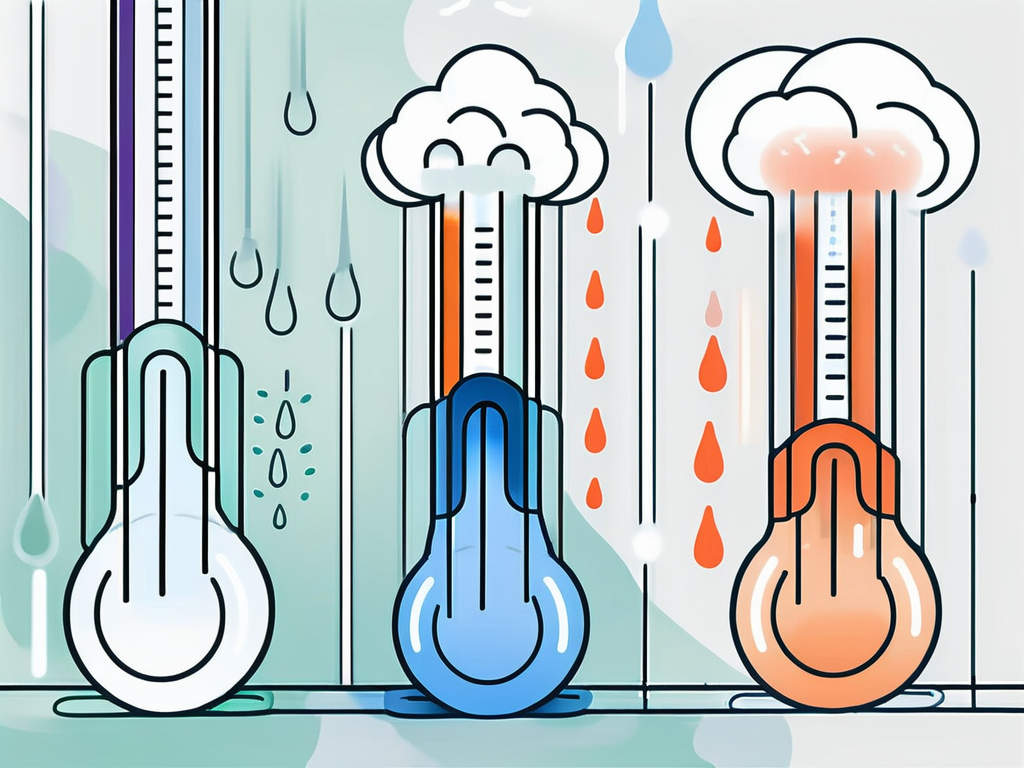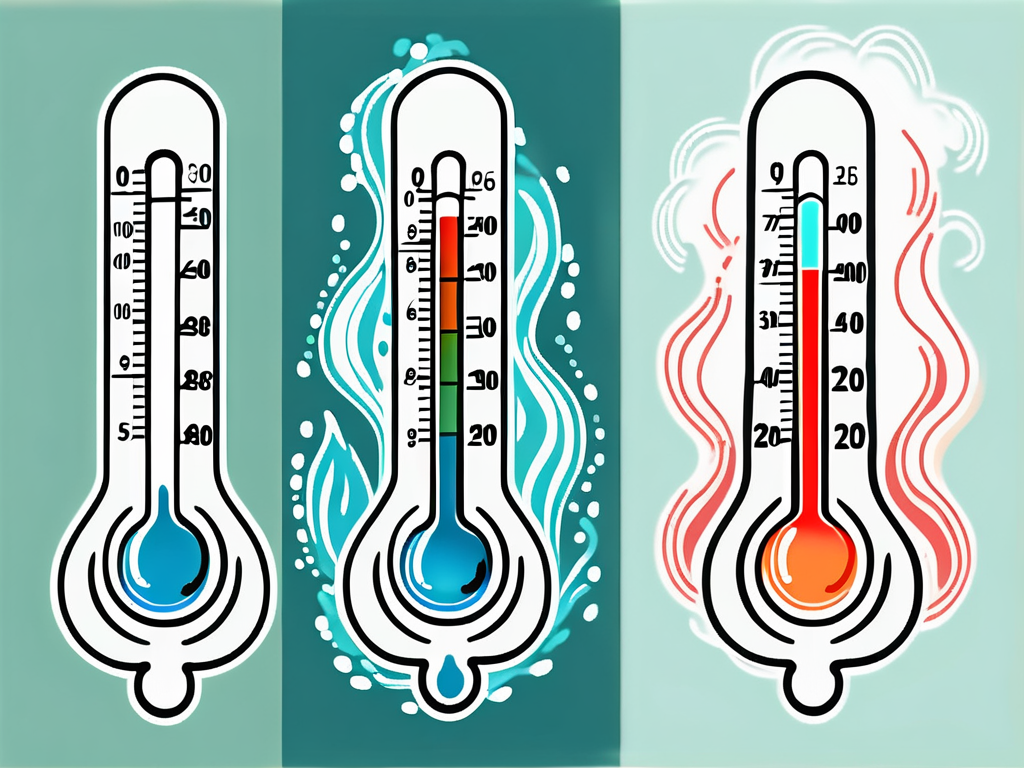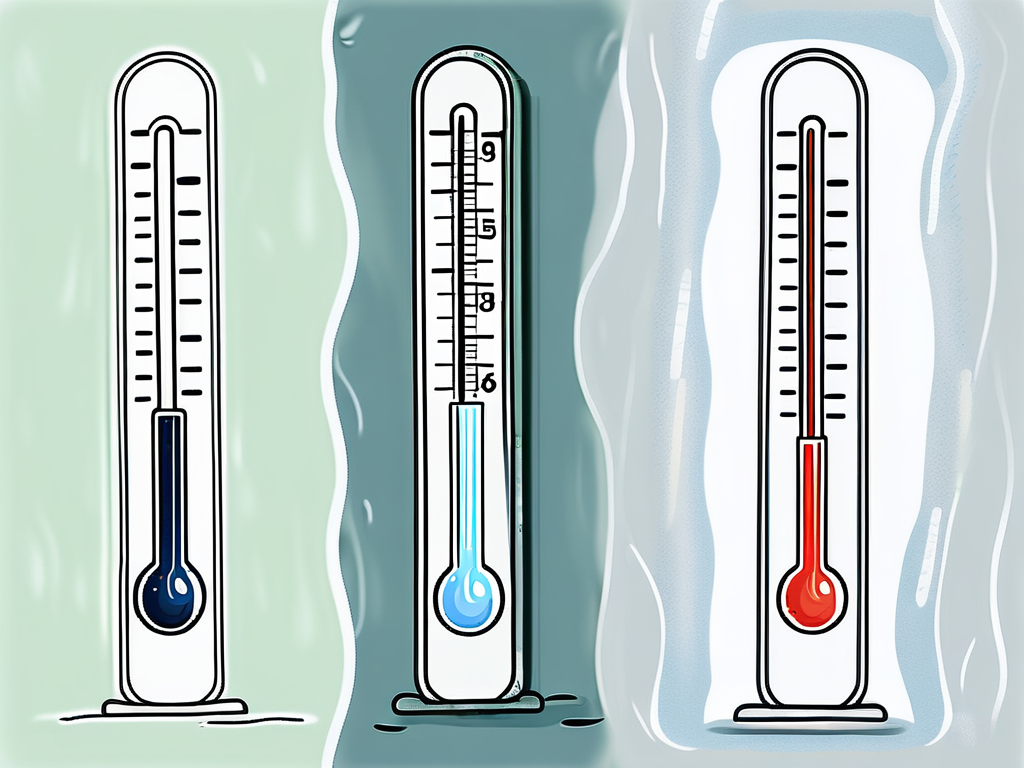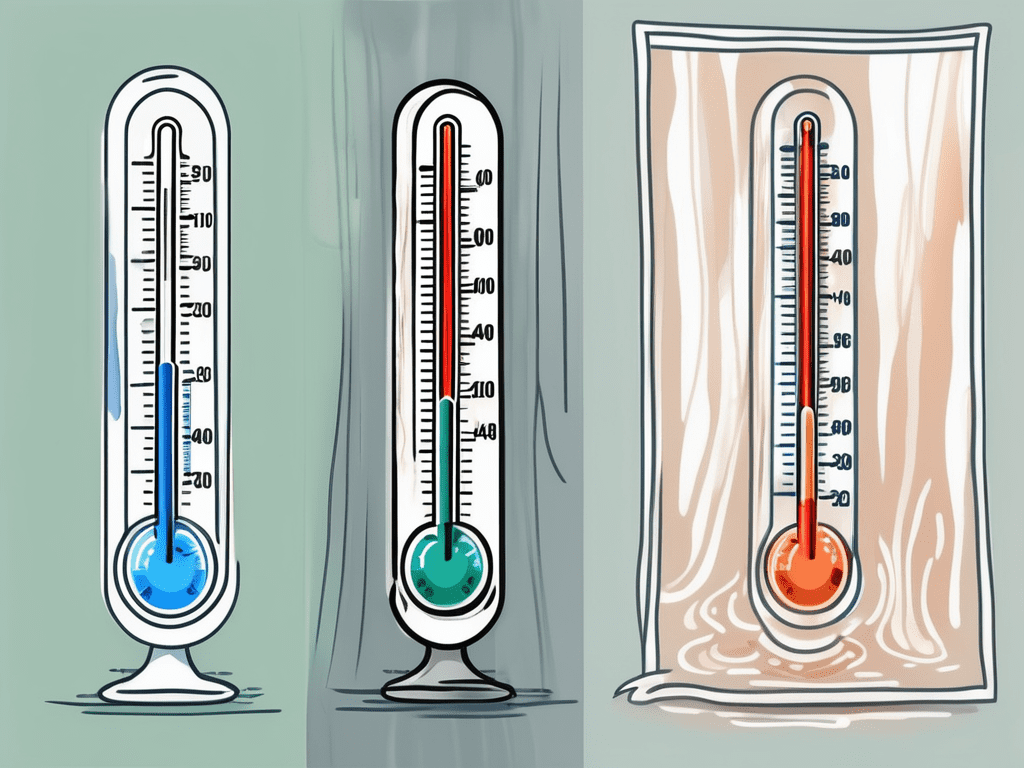The concept of wet-bulb temperature is a critical component in understanding and controlling humidity. It is a term used in meteorology, HVAC systems, and weather forecasting, among other fields. This article aims to provide an in-depth understanding of wet-bulb temperature, its calculation, its importance, and its applications in humidity control.
Humidity control is a significant aspect of maintaining comfortable and healthy indoor environments, particularly in buildings such as homes, offices, and factories. It also plays a crucial role in specific industries like agriculture and food processing. Understanding wet-bulb temperature can help in designing and operating effective humidity control systems.
Understanding Wet-Bulb Temperature
The wet-bulb temperature is the lowest temperature that can be achieved through evaporative cooling. It is measured using a thermometer that has its bulb wrapped in a water-soaked cloth, hence the term ‘wet-bulb’. As the water on the cloth evaporates, it cools the thermometer bulb, lowering the temperature reading.
The wet-bulb temperature is always lower than or equal to the air temperature (also known as the dry-bulb temperature) because evaporation causes cooling. However, the exact difference between the two depends on the humidity of the air. In dry air, the wet-bulb temperature can be significantly lower than the air temperature, while in very humid air, the two can be nearly the same.
Factors Affecting Wet-Bulb Temperature
Several factors can affect the wet-bulb temperature, including the dry-bulb temperature, the humidity of the air, and the pressure. The dry-bulb temperature and the humidity are the most significant factors. As the dry-bulb temperature increases or the humidity decreases, the potential for evaporation—and therefore cooling—increases, leading to a lower wet-bulb temperature.
Pressure also affects the wet-bulb temperature, although to a lesser extent than temperature and humidity. As the pressure decreases, the capacity for evaporation increases, leading to a lower wet-bulb temperature. However, this effect is usually small enough to be negligible in most practical applications.
Measuring Wet-Bulb Temperature
Wet-bulb temperature is typically measured using a device known as a psychrometer, which consists of two thermometers—one dry-bulb and one wet-bulb. The wet-bulb thermometer is covered with a water-soaked cloth and exposed to the air. As the water evaporates from the cloth, it cools the thermometer, and the temperature reading drops.
By comparing the readings from the wet-bulb and dry-bulb thermometers, one can determine the wet-bulb temperature and, from that, the relative humidity of the air. This process is a common method used in meteorology and HVAC systems to measure humidity.
Importance of Wet-Bulb Temperature in Humidity Control
Understanding the concept of wet-bulb temperature is crucial in humidity control for several reasons. Firstly, it provides a measure of the maximum cooling that can be achieved through evaporation. This information is vital in designing and operating cooling systems, particularly those that rely on evaporative cooling, such as swamp coolers.

Secondly, the wet-bulb temperature provides a way to measure the humidity of the air. By comparing the wet-bulb temperature to the dry-bulb temperature, one can determine the relative humidity. This information is essential in many applications, from weather forecasting to HVAC system design and operation.
Wet-Bulb Temperature in HVAC Systems
In HVAC systems, understanding the wet-bulb temperature is crucial for designing and operating effective cooling systems. For example, in a swamp cooler, which relies on evaporative cooling, the wet-bulb temperature provides a measure of the maximum cooling that can be achieved. If the wet-bulb temperature is too high, the cooler may not be able to provide sufficient cooling.
Furthermore, by comparing the wet-bulb and dry-bulb temperatures, one can determine the relative humidity of the air. This information can be used to control the operation of the HVAC system to maintain a comfortable and healthy indoor environment. For example, if the relative humidity is too high, the system can be adjusted to reduce the humidity, such as by increasing ventilation or dehumidification.
Wet-Bulb Temperature in Weather Forecasting
In weather forecasting, the wet-bulb temperature is used to predict the likelihood of precipitation, the type of precipitation (such as rain or snow), and the potential for evaporative cooling. For example, if the wet-bulb temperature is below freezing, any precipitation is likely to be snow rather than rain.
Furthermore, the wet-bulb temperature can be used to predict the potential for evaporative cooling, which can lead to rapid temperature drops and the formation of fog or dew. This information can be crucial in forecasting weather conditions and potential hazards, such as frost or black ice.
Calculating Wet-Bulb Temperature
The wet-bulb temperature can be calculated from the dry-bulb temperature and the relative humidity using various methods. One common method is to use a psychrometric chart, which is a graphical representation of the relationships between temperature, humidity, and other properties of air.

Another method is to use a formula that approximates the wet-bulb temperature based on the dry-bulb temperature and the relative humidity. There are several such formulas available, each with its own strengths and limitations. The choice of formula depends on the specific requirements of the application, such as the desired accuracy and the available data.
Using a Psychrometric Chart
A psychrometric chart is a graphical tool used to determine various properties of air, including the wet-bulb temperature, based on other known properties, such as the dry-bulb temperature and the relative humidity. The chart consists of several curves and lines representing the relationships between these properties.
To use a psychrometric chart to determine the wet-bulb temperature, one would locate the point on the chart that corresponds to the known dry-bulb temperature and relative humidity. The wet-bulb temperature can then be read off the chart along the line of constant enthalpy that passes through this point.
Using a Formula
There are several formulas available for calculating the wet-bulb temperature based on the dry-bulb temperature and the relative humidity. These formulas are mathematical approximations of the physical processes involved in evaporative cooling, and they vary in complexity and accuracy.
One common formula is the Stull formula, which provides a relatively simple and accurate approximation of the wet-bulb temperature for most atmospheric conditions. However, it is less accurate in conditions of high humidity and near the freezing point of water. Other formulas may be more suitable for these conditions, but they are generally more complex and require more computational resources.
Limitations and Challenges of Wet-Bulb Temperature
While the concept of wet-bulb temperature is a powerful tool in understanding and controlling humidity, it also has its limitations and challenges. One of the main limitations is that the wet-bulb temperature is a theoretical concept that assumes ideal conditions, such as perfect heat transfer and constant properties of air. In reality, these conditions are rarely met, and the actual cooling achieved may be less than the wet-bulb temperature suggests.
Another challenge is the measurement of wet-bulb temperature. The traditional method of using a psychrometer can be labor-intensive and prone to errors, particularly in conditions of high humidity or low air movement. Modern electronic sensors can provide more accurate and convenient measurements, but they also have their limitations, such as sensitivity to contamination and calibration drift.
Assumptions and Ideal Conditions
The concept of wet-bulb temperature is based on several assumptions and ideal conditions. For example, it assumes that the air is perfectly mixed and that the properties of air, such as its heat capacity and latent heat of vaporization, are constant. It also assumes that the heat transfer between the air and the wet-bulb thermometer is perfect, with no resistance or delay.
In reality, these assumptions are rarely met. The air may not be perfectly mixed, leading to variations in temperature and humidity. The properties of air can vary with temperature, pressure, and humidity. And the heat transfer between the air and the thermometer can be affected by factors such as the speed of air movement and the insulation of the thermometer. These factors can lead to discrepancies between the theoretical wet-bulb temperature and the actual cooling achieved.
Measurement Challenges
Measuring the wet-bulb temperature can be challenging, particularly in conditions of high humidity or low air movement. The traditional method of using a psychrometer requires manual operation and careful handling to avoid errors. For example, the cloth covering the wet-bulb thermometer must be kept clean and fully saturated with water. The psychrometer must be exposed to the air but protected from direct sunlight and other heat sources.
Modern electronic sensors can provide more accurate and convenient measurements of wet-bulb temperature. However, they also have their limitations. For example, they can be sensitive to contamination, which can affect their accuracy. They also require regular calibration to maintain their accuracy over time. Furthermore, they can be more expensive and complex to use than traditional psychrometers.
Conclusion
In conclusion, the concept of wet-bulb temperature is a crucial component in understanding and controlling humidity. It provides a measure of the maximum cooling that can be achieved through evaporation and a way to determine the relative humidity of the air. While it has its limitations and challenges, it remains a powerful tool in fields such as meteorology, HVAC systems, and weather forecasting.

By understanding the wet-bulb temperature, we can design and operate effective humidity control systems, predict weather conditions, and manage the comfort and health of indoor environments. As our understanding of this concept continues to grow, so too will our ability to control and manipulate the humidity of our surroundings for our benefit.




